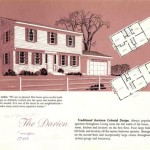Essential Aspects of House Model Plans
House model plans are detailed representations of architectural designs for houses. These plans provide the blueprint for the construction and layout of a home, serving as a crucial guide for architects, builders, and homeowners alike. Understanding the essential aspects of house model plans is imperative for effective home design and construction.
1. Floor Plan
The floor plan is the most fundamental aspect of a house model plan. It depicts the arrangement and layout of rooms, walls, windows, doors, and other structural elements on each floor of the house. Floor plans should be clear, accurate, and to scale, facilitating a thorough understanding of the spatial relationships between different areas of the home.
2. Exterior Elevations
Exterior elevations are two-dimensional drawings that show the outward appearance of the house from different angles. They illustrate the exterior design, including the roofline, siding, windows, doors, and other architectural features. Exterior elevations are essential for visualizing the aesthetics and curb appeal of the home.
3. Sections
Sections are vertical cross-sections of the house, providing insights into the height and depth of the structure. They display the relationship between different floors, ceilings, walls, and structural elements. Sections are crucial for understanding the vertical space allocation and overall volume of the home.
4. Electrical Plan
The electrical plan outlines the electrical system of the house, including the location of outlets, switches, lighting fixtures, and wiring. It ensures that the home meets electrical code requirements and provides a functional and safe electrical system.
5. Plumbing Plan
The plumbing plan similarly outlines the water supply and drainage systems of the house. It shows the location of fixtures (bathrooms, sinks, toilets), pipes, valves, and other plumbing components. The plumbing plan ensures that the home has an efficient and reliable water supply and drainage system.
6. HVAC Plan
The HVAC (heating, ventilation, and air conditioning) plan outlines the systems used to regulate the temperature and air quality within the home. It includes the location of HVAC units, ducts, vents, and other components. The HVAC plan ensures that the home is adequately heated, cooled, and ventilated.
7. Site Plan
The site plan depicts the house's placement on the building site, including the location of the driveway, walkways, landscaping, and other outdoor features. It ensures that the house is properly oriented on the lot and meets local building codes and regulations.
8. Scales and Dimensions
House model plans are typically drawn to scale, meaning that the dimensions on the plan correspond to the actual dimensions of the house. Accurate scales and dimensions are crucial for ensuring that the plans are precise and easy to interpret.
9. Legend and Symbols
Model plans commonly utilize legends and symbols to represent different materials, components, and features of the house. Understanding the legend and symbols is essential for interpreting the plans correctly.
10. Architectural Style
The architectural style of a house is reflected in the design elements and overall aesthetic of the model plans. Styles range from traditional to modern, and each style has its unique characteristics and requirements.
By understanding these essential aspects of house model plans, architects, builders, and homeowners can effectively design, construct, and plan the home of their dreams. House
House Plans How To Design Your Home Plan

30x40 House 3 Bedroom 2 Bath 1 200 Sq Ft Floor Plan Model

30x40 House 3 Bedroom 2 Bath 1 200 Sq Ft Floor Plan Model 2g

What Makes A Good Floor Plan

Low Budget Simple House Design Plans For Builders Blog Builderhouseplans Com

28x36 House 2 Bedroom Bath 1 008 Sq Ft Floor Plan Model 3e

30x26 House 2 Bedroom 1 Bath 780 Sq Ft Floor Plan Instant Model 2b
The Casita From Tilson Homes Custom Home Builders In

Small Ranch House Plan Two Bedroom Front Porch 109 1010

Highland Homes Home Plan Finder








